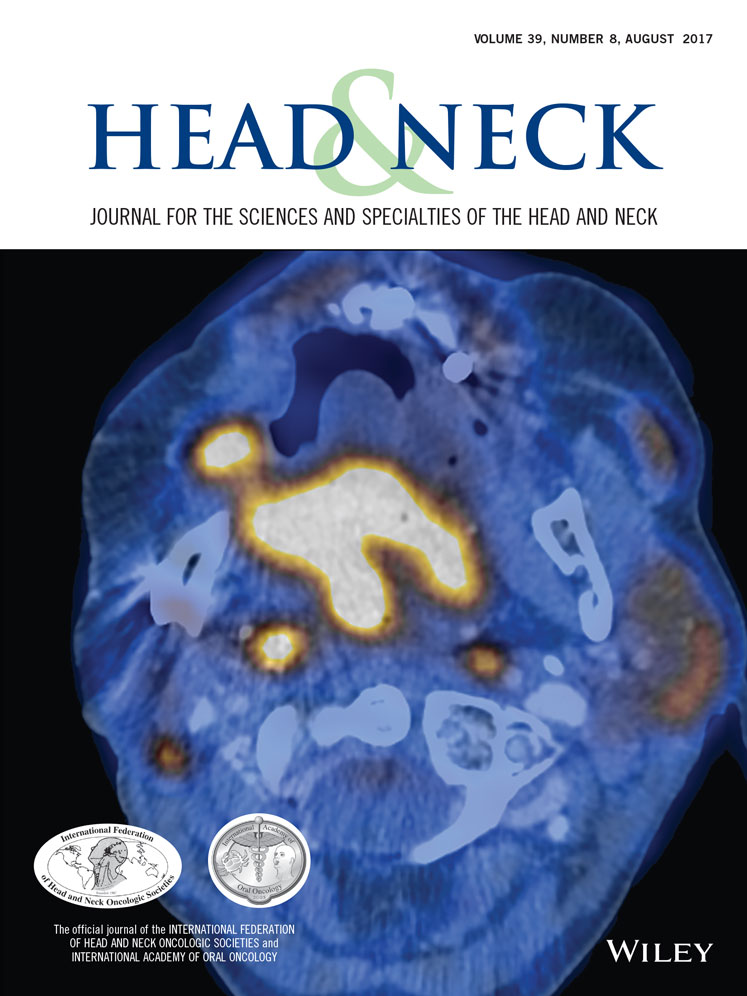Frailty index: Intensive care unit complications in head and neck oncologic regional and free flap reconstruction
Abstract
Background
Head and neck extirpations requiring reconstruction are challenging surgeries with high postoperative complication risk.
Methods
Regional and free flap reconstructions of head and neck defects were collected from the 2006-2013 American College of Surgeons National Surgical Quality Improvement Program (ACS-NSQIP) database. The modified frailty index was made of 15 variables, with increasing index scores indicative of frailer patients. Intensive care unit (ICU)-level complications were defined by Clavien-Dindo classification IV and analyzed with multivariable logistic regression.
Results
There were 266 flap reconstructions (126 regional and 140 free) with 86 (7.2%) Clavien-Dindo classification IV complications. As modified frailty index increased, a moderate correlation was demonstrated for Clavien-Dindo classification IV complications (R2 = 0.30). Increasing modified frailty index score was correlated on linear regression with free versus regional flaps: Clavien-Dindo classification IV (R2 = 0.09; 0.60), morbidity (R2 = 0.04; 0.59), and mortality (R2 = 0.07; 0.46), respectively. On multivariable analysis, the modified frailty index was associated with Clavien-Dindo classification IV complications for all flaps (odds ratio [OR] 4.38; 95% confidence interval [CI] 1.33-14.48) and free flaps (OR 6.60; 95%CI 1.02-42.52), but not regional flaps (OR 9.05; 95%CI 0.60-137.10).
Conclusion
The modified frailty index score is predictive of critical care support in head and neck resections necessitating reconstruction, specifically for free flaps.




